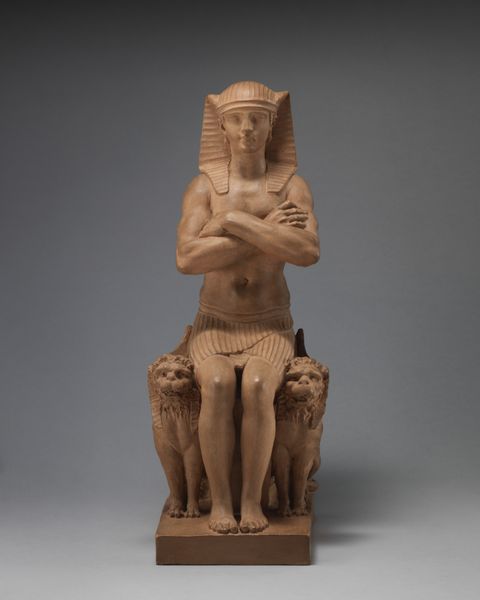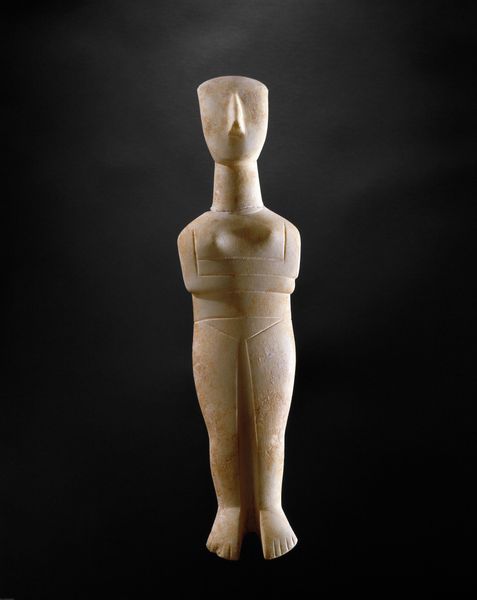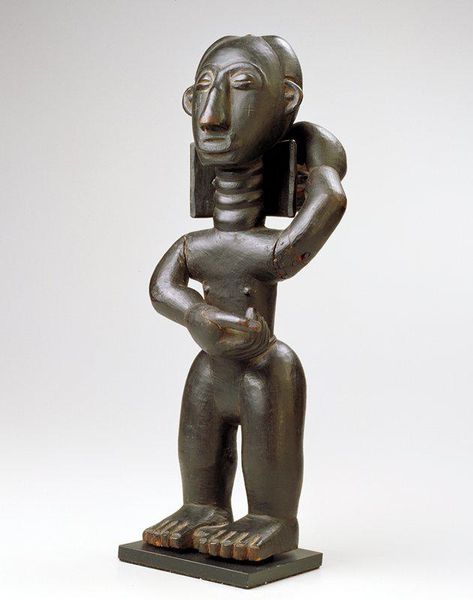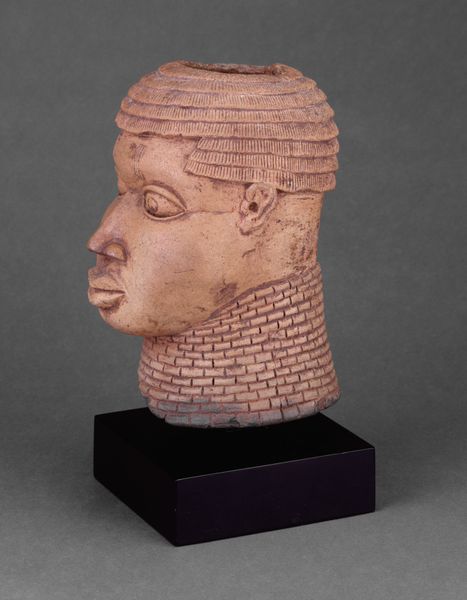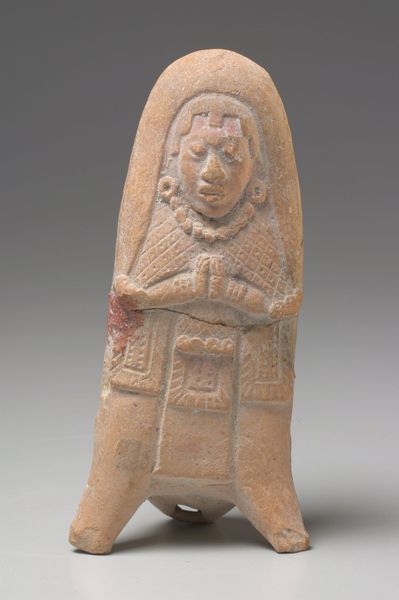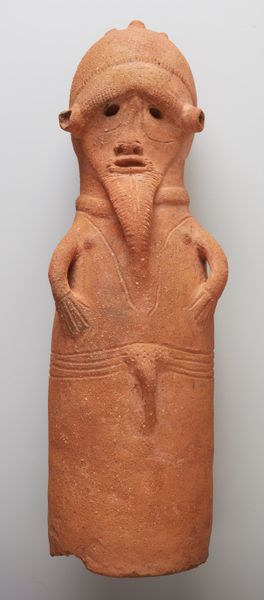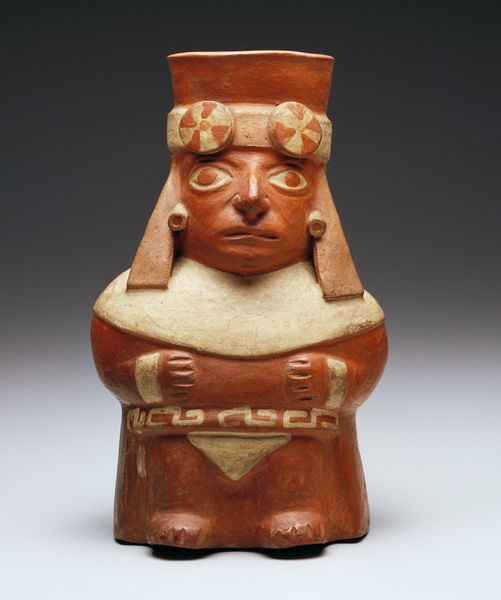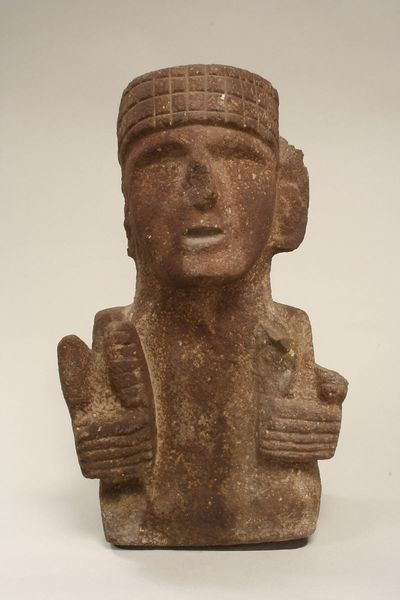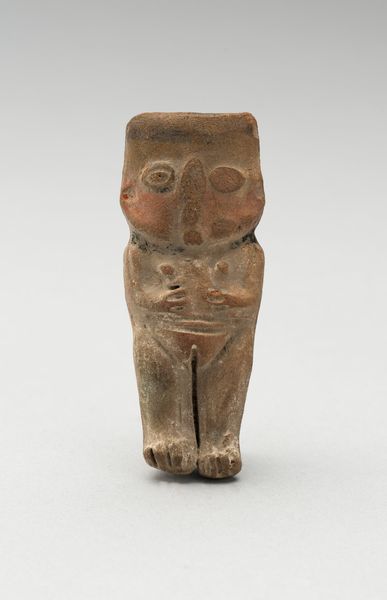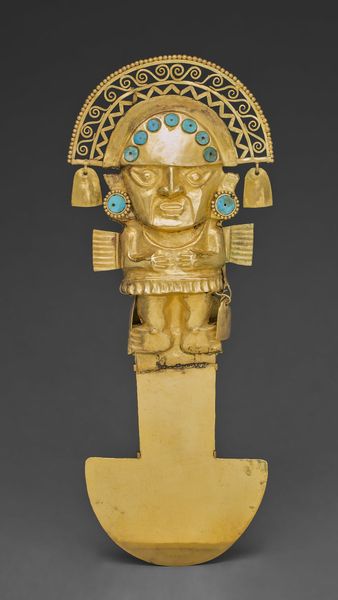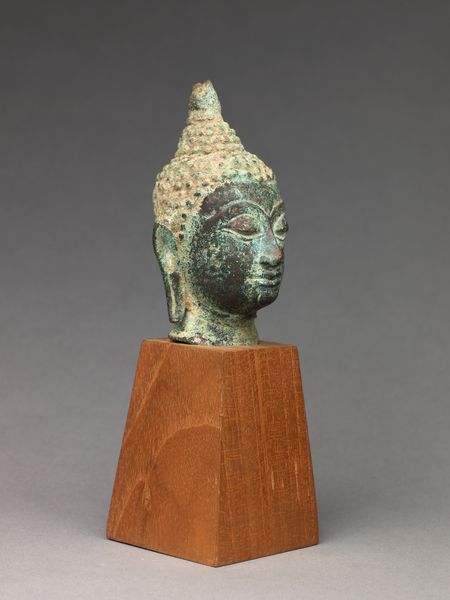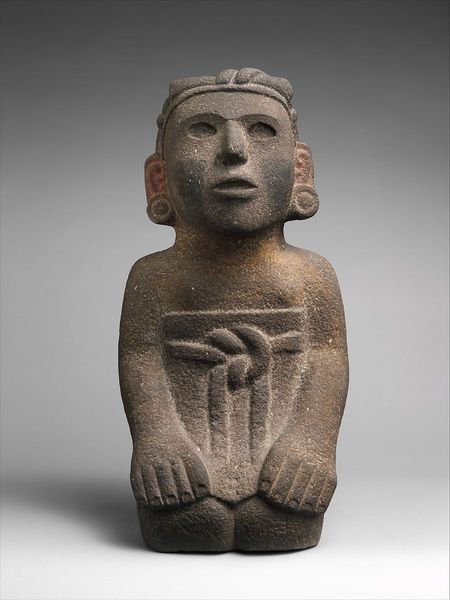
Shabti of Paser, the Vizier of Seti I and Ramesses II 1294 BC
0:00
0:00
sculpture
#
portrait
#
ancient-egyptian-art
#
figuration
#
form
#
egypt
#
ancient-mediterranean
#
sculpture
#
cartoon carciture
#
miniature
Dimensions: H. 15 cm (5 7/8 in.); W. 4.9 cm (1 15/16 in.); D. 3.3 cm (1 3/16 in.)
Copyright: Public Domain
Editor: Here we have the "Shabti of Paser, the Vizier of Seti I and Ramesses II," dating back to 1294 BC. The vibrant blue color is striking. What does this artwork say to you? Curator: Well, first off, consider Paser's position. He wasn't just anyone; he was a powerful vizier serving pharaohs during a pivotal time. This Shabti isn't simply a sculpture; it’s a statement about power, identity, and the afterlife, reflecting Paser’s social standing within the intensely stratified society of ancient Egypt. The very material and the decision to create this figure speaks volumes about what he thought was needed to navigate the afterlife, and the social inequities present even in death. Editor: So, you’re saying the sculpture acts as a kind of social commentary, even in this funereal context? Curator: Absolutely. Funerary art often served as propaganda – not just for the rulers, but for the elite class as a whole. How do depictions of the elite reinforce or challenge existing power structures, even in death? Notice the meticulous details in the hieroglyphs; this figure, small as it is, projects an image of authority and control. It forces us to ask: whose stories are preserved and whose are erased in history? Who got a Shabti? And who did not? Editor: That is a powerful insight into the social hierarchy. The color seems to add another layer too. Curator: Exactly! That distinctive blue, a color often associated with divinity and the heavens, was not just aesthetically pleasing. Consider how its availability and application would have signaled status, aligning Paser with divine authority. So, what can this artwork teach us about agency and social stratification today? Editor: This makes me think differently about how we commemorate figures, what symbols we use, and who controls that narrative. Curator: Precisely. Reflect on how this artifact continues to resonate across time, inviting us to question and challenge power dynamics.
Comments
No comments
Be the first to comment and join the conversation on the ultimate creative platform.
